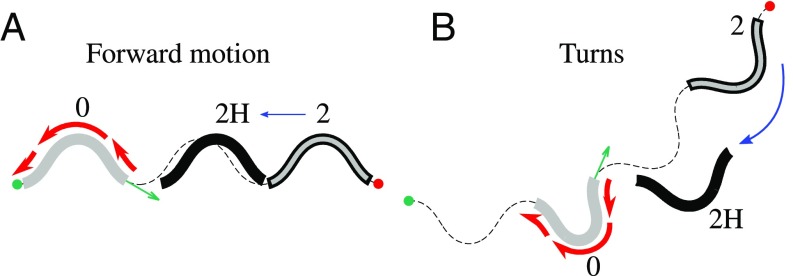Fig. 10.
Mechanism of hydrodynamic hindrance of planar motion. A and B show no-slip paths (thin dashed line) and nematode positions (thick lines) in no-slip crawling/burrowing and swimming. The initial body configurations (0) are marked by the thick gray line. The body configurations after two undulation periods, marked with 2, are shown in no-slip crawling/burrowing by the gray line with black border and the corresponding body configurations in swimming (2H) by a thick black line. In forward locomotion (A), the longitudinal hydrodynamic resistance (indicated for the initial configuration by red arrows) produces a net hydrodynamic force causing backward nematode displacement (indicated by the blue arrow); it slows the nematode down. Similarly, during a planar turn (B) the net hydrodynamic torque produces rotation that reduces the overall turn angle of the nematode.

